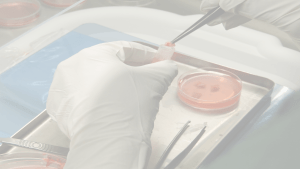Welcome to the EXOSOME XIII mission. Just sit down and make yourself home inside the encapsulated safety lipid membranes, from where you will start a journey to the core of the heart tissue in the Human galaxy. Now, let’s start our quest to find new markers that could help us detect failures in the cardiac system!
We are now at the central heart station. Here, there is a huge number of passengers travelling every day through the Human galaxy and the chaos is constant. All types of cardiac cells release thousands of sphere-shaped travellers. Their main features are the outer lipid membrane that encloses a fragment of their source cell and the specific luggage they carry. Let me introduce you to our travellers: the extracellular vesicles. This term refers to a wide range of vesicles, which includes different family types according to the traveller’s origin and size, their luggage, and their exit mechanism. These travellers are the youngest of their family, and considering they are the cause of an increase in casualties in the Human galaxy, our star travellers could not be anyone else but the exosomes. Their mission is to travel from one cell to another as essential messengers, and thus having an important role in keeping cellular communication working properly. Their luggage is basically the message they are going to deliver to cell at the end of their travel, which is based on the type this cell is as well as on the type of cell where they start their journey. In addition, all exosomes share a part of this cargo, thanks to which we can distinguish them from the rest of the travellers.

Today is specially busy because the alarms warning about a decrease in the glucose and oxygen levels are off: “Exosomes coming from the cardiac muscle that are going to the coronary artery have to start their journey right now! Please, do not forget your luggage and protect your personal proteins and nucleic acids”.
These exosomes are like satellites that can measure the damage caused. Thanks to them, we have some clues with which we might be able to detect possible cardiac failures, such as the one due to the lack of oxygen and glucose. Therefore, the EXOSOME XIII mission consists of finding the exosomes when they are travelling through the arterial and venous roads part of the Human galaxy, separate them from the rest of travellers, and identify the specific cargo to identify the failure that has happened.
Once we know the goal of our mission, we land in the laboratory. We forget about this fantasy novel and we change our space suit for our white coat and gloves so we can start with our real work.
If there is something clear about the simulation explained above is that our work is focused on exosomes. Specifically, we study those secreted by cardiac cells (cardiomyocyte-derived exosomes) when there is a lack of oxygen and nutrients, which happens if an individual suffers from an ischaemic condition. This situation is caused by an arterial obstruction, which results into muscular cells being either damaged or dead. This phenomenon is clinically known as acute coronary syndrome (ACS), whose most serious clinical manifestation is unfortunately much more popular: the heart attack. One way the cells have to respond to this phenomenon is by liberating specific molecules to the bloodstream in a much larger quantity that they would normally do. Consequently, these molecules are used as markers to identify a hear attack, together with other diagnostic tools that have already been standardised. The main issue with this approach is that the less severe cases might not be detected. These patients have ambiguous symptoms; they do not specifically signal for a heart attach, which makes it more difficult to diagnose them (1).
Due to this challenging situation, our main aim is to look for new molecules that can be used as markers and that, together with established diagnostic tools, could help us to identify ACS patients with unclear symptoms. This is when we bring back our exosomes to the table. The molecules that can be used as markers to signal the lack of oxygen and nutrients, apart from being delivered into the bloodstream, can be secreted within the exosomes. As I have mentioned above, thanks to the type of cargo the exosomes carry and depending on the type of cell they come from, the exosomes could be potentially used as diagnostic tools to detect ACS (2).
Now, in order to achieve this goal, laboratory work is more simplistic with the models used. Among them, we try to reproduce what happens to ACS patients (in vivo) by using cellular models models (in vitro).

Firstly, we establish a cellular model of cardiomyocytes, that is, we grow heart muscle cells as they will secrete the exosomes in which we are interested in. Next, we mimic the ischemia conditions suffered by an SCA patient. To do this, we suppress the supply of glucose and oxygen, which results in cardiomyocytes releasing the exosomes to the medium in the culture plate, among other particles. After this, to study the cargo of the secreted exosomes, we have to isolate and purify them from the rest of travellers (vesicles, particles, and cell debris). Then, we ensure that we have separated the exosomes and do not have many of the other molecules. To do that, we check that the size, the shape, and the cargo (the part of the cargo shared by most of the exosomes) coincide with exosome features.
At this point, we are finally getting to the most exciting moment of the mission: we can study the exosome cargo and search for our marker molecules. Particularly, we focus on the study of proteins and small ribonucleic acids. Those molecules that we identify in greater abundance in exosomes obtained under ischemia could act as markers of ACS. Consequently, if they were validated, we could then search for the same type of molecules in blood samples collected from the patients (real case), which would make it easier to diagnose them.
In essence, beyond working with simulations, the results obtained from the cellular models we establish in vitro are just the starting point to forthcoming in vivo studies. Thanks to these approximations, we could identify ischaemia marker molecules in the cargo carried out by the exosomes because they are diagnostic satellites of ACS in the Human Galaxy. Overall, the EXOSOME XIII mission could be considered successfully completed.
By Paula Gómara Utrilla (@PaulaGU_24), researcher at the Cardiovascular Systems of Adult Progrenitors Research Group at the Aragonés Institute of Health Sciences (Spain).
More information:
- Hamm CW et al. (2011).
- Sluijter et al. (2014).
- Images used in Figure 1:
- Galaxy: obtained from Pxhere.
- Cell with various extracellular vesicles: image adapted from Sluijter et al. (2014).
- Heart: obtained from Freepik.
- Cardiac cell types: scheme adapted from Jung JH et al. (2017).
- Images used in Figure 2:
- Circulatory system: obtained from Freepik.
- Artery: obtained from Freepik.
- Cardiomyocytes: adapted from Lebeau et al. 2020.
- Culture plate: obtained from pngwing.
- Exosomes: adapted from Kalluri and LeBleu (2020).






